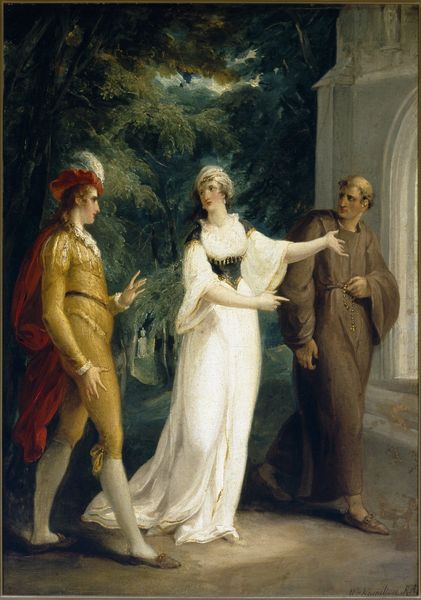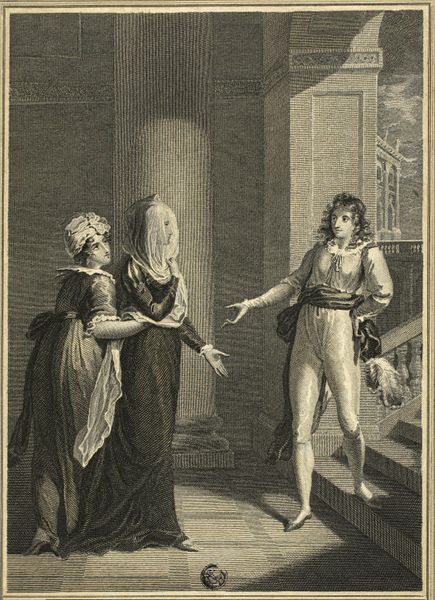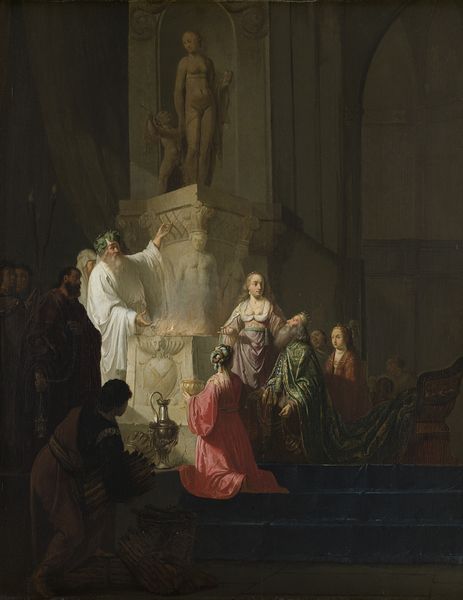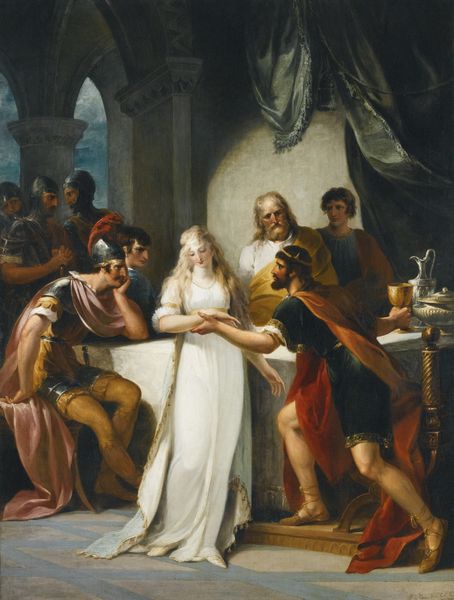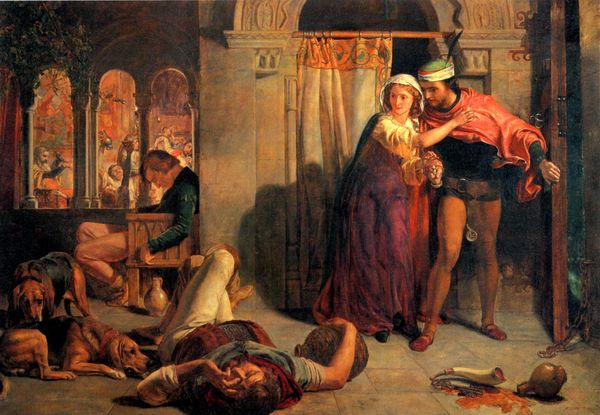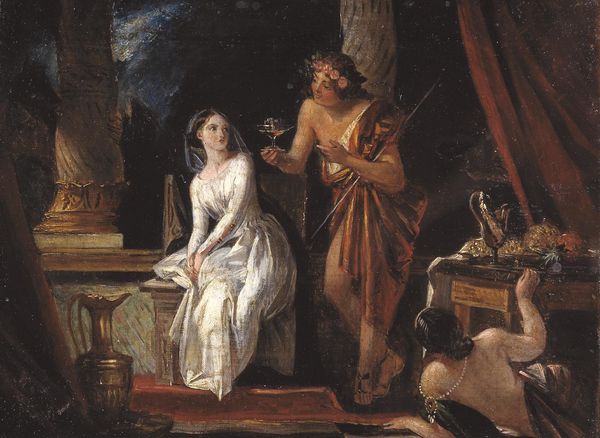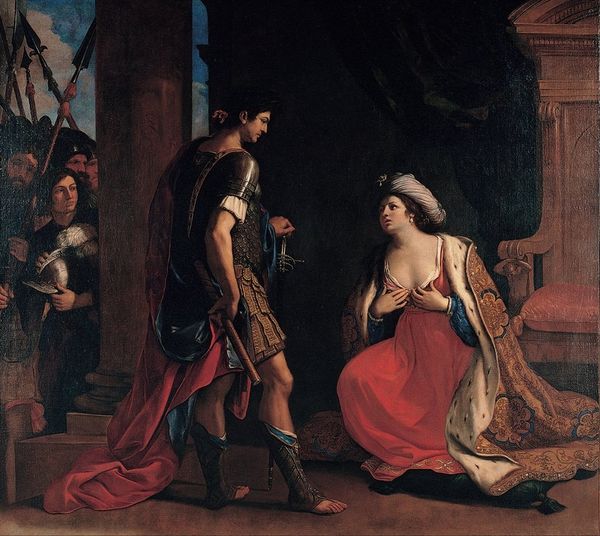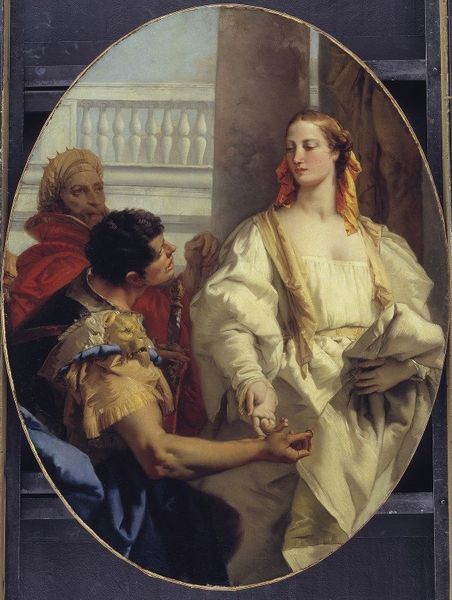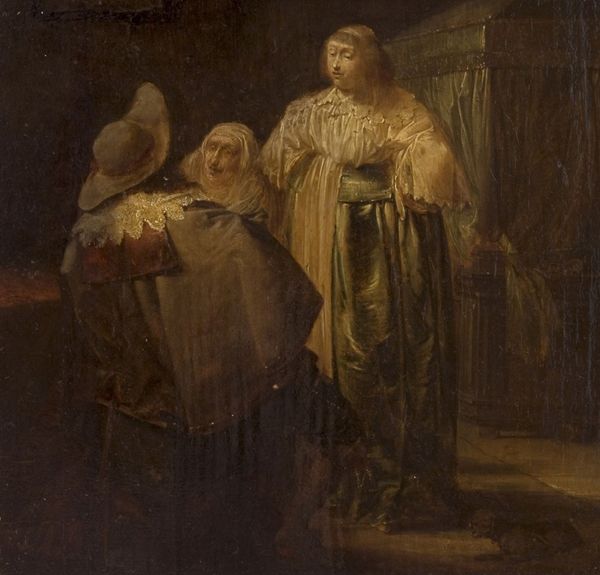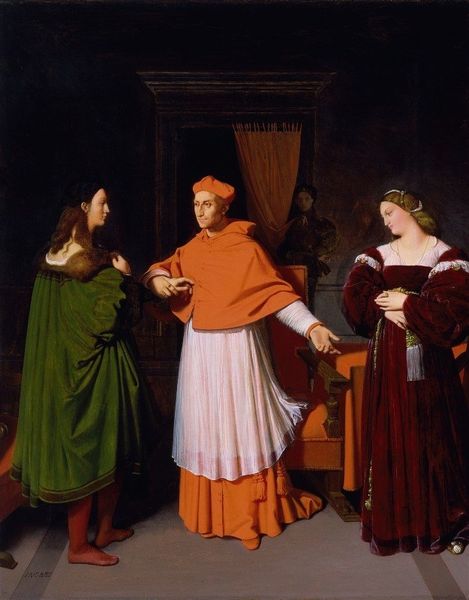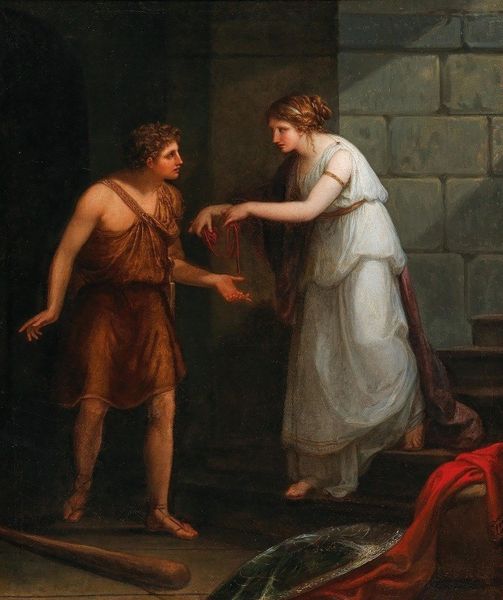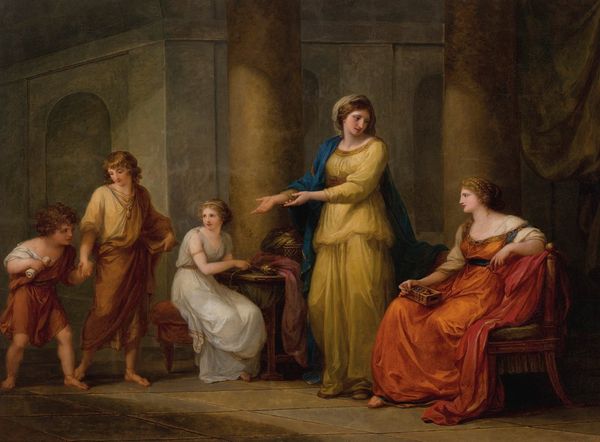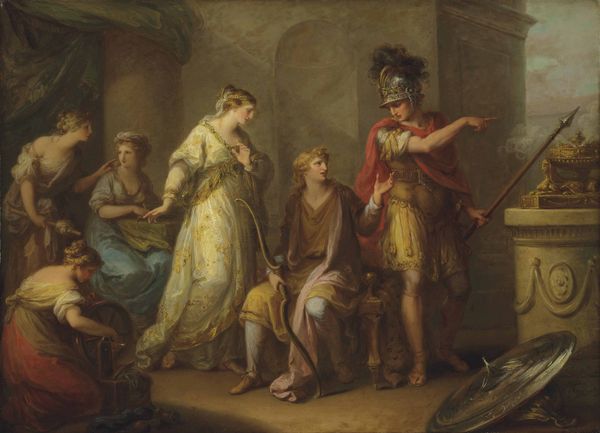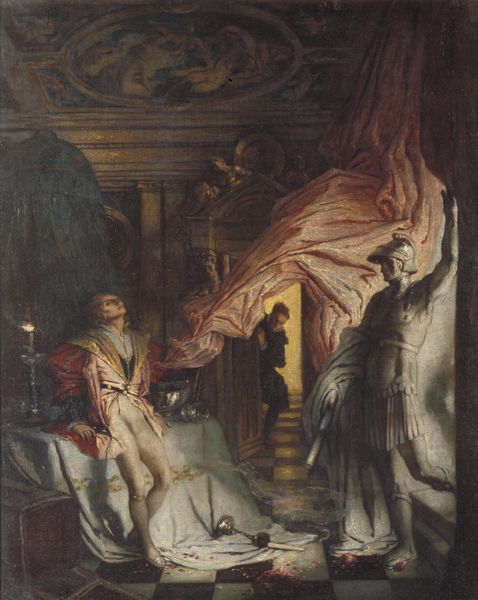
painting, watercolor
#
portrait
#
gouache
#
water colours
#
painting
#
figuration
#
watercolor
#
romanticism
#
watercolour illustration
#
genre-painting
#
history-painting
Copyright: Public domain
William Hamilton painted Maria, Olivia, and Viola from 'Twelfth Night,' capturing a moment laden with theatrical tension. Note Viola, disguised as Cesario, with arms outstretched in a gesture that echoes across art history. This open-handed stance, reminiscent of supplication or revelation, hearkens back to classical oratory, yet here it signifies the uncertainty of identity and desire. Think of the figures in Renaissance paintings, their gestures imbued with divine or humanistic appeal. The veil worn by Olivia also alludes to mourning and mystery. The motif of disguise, seen here through Viola's male attire, reappears throughout art, symbolizing transformation, deception, and the fluidity of identity. This visual encoding taps into our collective subconscious, triggering feelings of intrigue and emotional transformation. Notice how the architectural backdrop lends a stage-like quality to the scene, further emphasizing the constructed nature of identity. These symbols remind us of the cyclical dance between appearance and reality, an eternal theme in the theater of life.
Comments
No comments
Be the first to comment and join the conversation on the ultimate creative platform.
